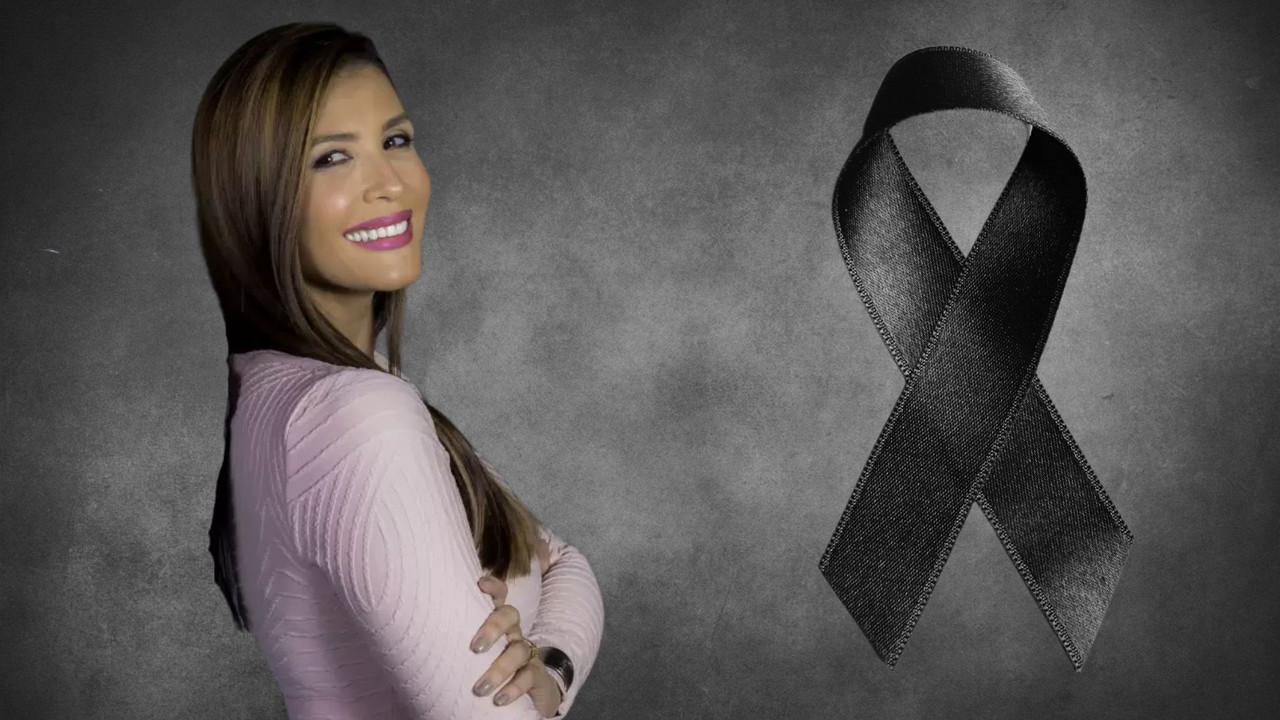The recent passing of Patricia Fuenmayor at age 51 has left an indelible mark on the landscape of American television journalism, particularly in the realm of Latina representation. Her journey from Miss South America to becoming a respected correspondent for Univision's "Despierta América" represents more than just a personal success story—it embodies the ongoing struggle and gradual progress of Latina women breaking through barriers in US media.
In an industry where Latinos are vastly underrepresented in newsrooms, Hollywood films and TV and other media industries, Patricia Fuenmayor's career trajectory serves as both an inspiration and a reminder of how far we still need to go. Her story illuminates the complex challenges that Latina journalists face while highlighting the significant impact they can have when given the platform to tell their communities' stories.
The Representation Challenge in US Television

To understand the significance of Patricia Fuenmayor's career, we must first examine the broader context of Latino representation in American media. Recent studies reveal a troubling reality: Latino representation in media industry grew by only 1% in the past decade, with Latinas facing even starker disparities. The only roles they have more representation than men are as news analysts/journalists and writers/authors, beating out men by only 1% in both sectors.
This underrepresentation is particularly striking when considering that Latinxs are the second-largest so-called ethnic group in America, encompassing almost 20 percent of the country's population. The disconnect between demographic reality and media representation creates a significant gap that journalists like Patricia Fuenmayor worked tirelessly to bridge.
The impact of this underrepresentation extends far beyond numbers. "Hollywood in particular is still the main image-defining and narrative-creating institution in American society," and "Latinos are still largely invisible in this industry", as noted by media researchers. This invisibility has real consequences for how Latino communities are perceived and understood by the broader American public.
Patricia's Journey: From Beauty Queen to Barrier-Breaking Journalist
Patricia Fuenmayor's path to television journalism was unconventional yet emblematic of the diverse routes Latina women often take to reach positions of influence in media.

Born in Venezuela, Patricia first gained national attention representing Zulia state in Miss Venezuela 1997, later earning the title of Miss South America in 1998. While pageant participation might seem far removed from serious journalism, for many Latina women, beauty competitions have historically served as one of the few available platforms for public visibility and later career development in media.
Her transition from beauty queen to journalist reflects a broader pattern among Latina media personalities who have had to navigate multiple pathways to establish credibility in newsrooms. This journey often requires overcoming stereotypes and proving their journalistic credentials beyond their initial public recognition.
From the studios of Venevisión in Caracas, Venezuela, to the bustling media landscape of Univision in New York City, Fuenmayor's career was defined by elegance, perseverance, and a profound dedication to storytelling. Her evolution from Venezuelan television to becoming a correspondent for one of America's largest Spanish-language networks demonstrates the international scope of Latino media and the valuable perspectives that immigrant journalists bring to American newsrooms.
The Significance of Spanish-Language Media
Patricia's work at Univision placed her at the heart of Spanish-language television in the United States, a sector that plays a crucial role in serving Latino communities. As a correspondent for TelevisaUnivision and anchor of Edición Digital NY in Univision Nueva York, she occupied a vital position in the media ecosystem that serves millions of Spanish-speaking Americans.
Read Also: How To Solve Buffering And Connectivity Issues On Google TV Streamer?
Spanish-language media serves multiple functions within the broader American media landscape. It provides news and information in the native language of many Latino viewers, offers perspectives that might be overlooked by mainstream English-language media, and creates a bridge between Latino communities and broader American society. Journalists like Patricia Fuenmayor were essential in fulfilling these roles, bringing both professional credibility and cultural authenticity to their reporting.
Her work on "Despierta América," one of the most popular Spanish-language morning shows in the United States, gave her a platform to reach millions of viewers daily. She served as a correspondent for Despierta América, a position that required her to cover everything from breaking news to community stories that resonated with Latino audiences across the country.
Overcoming Personal and Professional Challenges

Patricia's career was marked not just by professional success but also by personal resilience that resonated with many in the Latino community. Her journey was defined by weathering personal hardship, including the traumatic experience that led her family to leave Venezuela. Her ability to rebuild her career in a new country while maintaining her professional standards speaks to the immigrant experience that many of her viewers could relate to.
This personal experience added depth and authenticity to her journalism. Latina TV news journalists have endured discrimination, sexism and higher standards than their male counterparts, but they are highly respected and trusted by their public. Patricia embodied this paradox, facing the challenges common to Latina journalists while building a reputation for reliability and professionalism that earned her viewers' trust.
Her battle with cancer, which she kept private, reflects another aspect of the pressure faced by public figures in the Latino community. The expectation to maintain strength and composure while dealing with personal struggles is particularly acute for Latina journalists, who often serve as role models for their communities while navigating their own challenges.
Breaking Stereotypes and Expanding Narratives
One of Patricia Fuenmayor's most significant contributions to Latina representation was her role in expanding the narrative of what Latina journalists could be and do. Her journalism career encompassed sports and fashion coverage. On Televen's Teledeportes, she reported on sports news and international events, showcasing her adaptability. Her work with E! Entertainment, covering Latin American fashion weeks, strengthened her ties to the fashion and entertainment industries.
You Must Read Also: How To Watch The PGA Championship 2025: Full TV And Streaming Schedule?
This versatility was crucial in demonstrating that Latina journalists could excel across multiple beats and formats, moving beyond the limited roles often assigned to Latino media personalities. By covering sports, entertainment, and hard news with equal professionalism, she helped establish a model for comprehensive journalism that transcended traditional expectations.
Her work also contributed to the broader goal of authentic Latino representation in media. Rather than relying on stereotypical portrayals, her journalism reflected the complex realities of Latino communities, covering stories that mattered to her audience while maintaining the highest professional standards.
The Ripple Effect: Inspiring Future Generations
Patricia's impact extends beyond her immediate contributions to television journalism. Her career trajectory and professional achievements serve as a roadmap for aspiring Latina journalists navigating an industry where representation remains limited. "One of the ways that you begin to fix that problem of negative portrayals" is through increased representation behind the camera and in newsrooms.
The visibility of successful Latina journalists like Patricia Fuenmayor is crucial for encouraging young Latinas to pursue careers in media. Representation matters not just for audiences who see themselves reflected on screen, but also for future journalists who need role models to show them that success is possible despite the barriers they may face.
Her bilingual and bicultural approach to journalism also provided a template for how Latino media professionals can serve as bridges between communities, translating not just language but cultural context and understanding between different audiences.
Read Also : What happened between Blake Lively and Justin Baldoni?
The recent passing of Patricia Fuenmayor at age 51 has left an indelible mark on the landscape of American television journalism, particularly in the realm of Latina representation. Her journey from Miss South America to becoming a respected correspondent for Univision's "Despierta América" represents more than just a personal success story—it embodies the ongoing struggle and gradual progress of Latina women breaking through barriers in US media.
In an industry where Latinos are vastly underrepresented in newsrooms, Hollywood films and TV and other media industries, Patricia Fuenmayor's career trajectory serves as both an inspiration and a reminder of how far we still need to go. Her story illuminates the complex challenges that Latina journalists face while highlighting the significant impact they can have when given the platform to tell their communities' stories.
The Representation Challenge in US Television
To understand the significance of Patricia Fuenmayor's career, we must first examine the broader context of Latino representation in American media. Recent studies reveal a troubling reality: Latino representation in media industry grew by only 1% in the past decade, with Latinas facing even starker disparities. The only roles they have more representation than men are as news analysts/journalists and writers/authors, beating out men by only 1% in both sectors.
This underrepresentation is particularly striking when considering that Latinxs are the second-largest so-called ethnic group in America, encompassing almost 20 percent of the country's population. The disconnect between demographic reality and media representation creates a significant gap that journalists like Patricia Fuenmayor worked tirelessly to bridge.
The impact of this underrepresentation extends far beyond numbers. "Hollywood in particular is still the main image-defining and narrative-creating institution in American society," and "Latinos are still largely invisible in this industry", as noted by media researchers. This invisibility has real consequences for how Latino communities are perceived and understood by the broader American public.
Patricia's Journey: From Beauty Queen to Barrier-Breaking Journalist
Patricia Fuenmayor's path to television journalism was unconventional yet emblematic of the diverse routes Latina women often take to reach positions of influence in media.
Born in Venezuela, Patricia first gained national attention representing Zulia state in Miss Venezuela 1997, later earning the title of Miss South America in 1998. While pageant participation might seem far removed from serious journalism, for many Latina women, beauty competitions have historically served as one of the few available platforms for public visibility and later career development in media.
Her transition from beauty queen to journalist reflects a broader pattern among Latina media personalities who have had to navigate multiple pathways to establish credibility in newsrooms. This journey often requires overcoming stereotypes and proving their journalistic credentials beyond their initial public recognition.
From the studios of Venevisión in Caracas, Venezuela, to the bustling media landscape of Univision in New York City, Fuenmayor's career was defined by elegance, perseverance, and a profound dedication to storytelling. Her evolution from Venezuelan television to becoming a correspondent for one of America's largest Spanish-language networks demonstrates the international scope of Latino media and the valuable perspectives that immigrant journalists bring to American newsrooms.
The Significance of Spanish-Language Media
Patricia's work at Univision placed her at the heart of Spanish-language television in the United States, a sector that plays a crucial role in serving Latino communities. As a correspondent for TelevisaUnivision and anchor of Edición Digital NY in Univision Nueva York, she occupied a vital position in the media ecosystem that serves millions of Spanish-speaking Americans.
Read Also: How To Solve Buffering And Connectivity Issues On Google TV Streamer?
Spanish-language media serves multiple functions within the broader American media landscape. It provides news and information in the native language of many Latino viewers, offers perspectives that might be overlooked by mainstream English-language media, and creates a bridge between Latino communities and broader American society. Journalists like Patricia Fuenmayor were essential in fulfilling these roles, bringing both professional credibility and cultural authenticity to their reporting.
Her work on "Despierta América," one of the most popular Spanish-language morning shows in the United States, gave her a platform to reach millions of viewers daily. She served as a correspondent for Despierta América, a position that required her to cover everything from breaking news to community stories that resonated with Latino audiences across the country.
Overcoming Personal and Professional Challenges
Patricia's career was marked not just by professional success but also by personal resilience that resonated with many in the Latino community. Her journey was defined by weathering personal hardship, including the traumatic experience that led her family to leave Venezuela. Her ability to rebuild her career in a new country while maintaining her professional standards speaks to the immigrant experience that many of her viewers could relate to.
This personal experience added depth and authenticity to her journalism. Latina TV news journalists have endured discrimination, sexism and higher standards than their male counterparts, but they are highly respected and trusted by their public. Patricia embodied this paradox, facing the challenges common to Latina journalists while building a reputation for reliability and professionalism that earned her viewers' trust.
Her battle with cancer, which she kept private, reflects another aspect of the pressure faced by public figures in the Latino community. The expectation to maintain strength and composure while dealing with personal struggles is particularly acute for Latina journalists, who often serve as role models for their communities while navigating their own challenges.
Breaking Stereotypes and Expanding Narratives
One of Patricia Fuenmayor's most significant contributions to Latina representation was her role in expanding the narrative of what Latina journalists could be and do. Her journalism career encompassed sports and fashion coverage. On Televen's Teledeportes, she reported on sports news and international events, showcasing her adaptability. Her work with E! Entertainment, covering Latin American fashion weeks, strengthened her ties to the fashion and entertainment industries.
You Must Read Also: How To Watch The PGA Championship 2025: Full TV And Streaming Schedule?
This versatility was crucial in demonstrating that Latina journalists could excel across multiple beats and formats, moving beyond the limited roles often assigned to Latino media personalities. By covering sports, entertainment, and hard news with equal professionalism, she helped establish a model for comprehensive journalism that transcended traditional expectations.
Her work also contributed to the broader goal of authentic Latino representation in media. Rather than relying on stereotypical portrayals, her journalism reflected the complex realities of Latino communities, covering stories that mattered to her audience while maintaining the highest professional standards.
The Ripple Effect: Inspiring Future Generations
Patricia's impact extends beyond her immediate contributions to television journalism. Her career trajectory and professional achievements serve as a roadmap for aspiring Latina journalists navigating an industry where representation remains limited. "One of the ways that you begin to fix that problem of negative portrayals" is through increased representation behind the camera and in newsrooms.
The visibility of successful Latina journalists like Patricia Fuenmayor is crucial for encouraging young Latinas to pursue careers in media. Representation matters not just for audiences who see themselves reflected on screen, but also for future journalists who need role models to show them that success is possible despite the barriers they may face.
Her bilingual and bicultural approach to journalism also provided a template for how Latino media professionals can serve as bridges between communities, translating not just language but cultural context and understanding between different audiences.
Read Also : What happened between Blake Lively and Justin Baldoni?